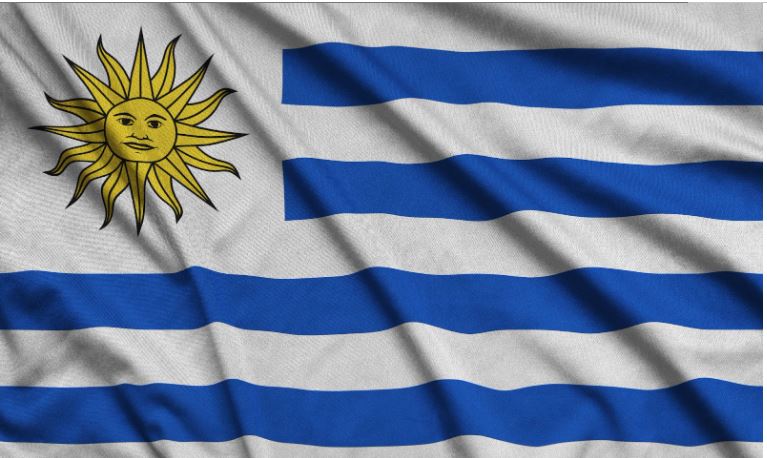10 Fun Facts About Uruguay That Will Amaze You
Get ready to uncover captivating tidbits about Uruguay! Situated between Brazil and Argentina, this South American gem is brimming with intriguing facts to pique your curiosity. From its stunning beaches to its renowned football culture, exploring Uruguay promises an eye-opening adventure full of surprises and fascinating insights.
Let’s dive in!
Contents
1. Uruguay Coins Feature Animals
Uruguayan coins showcase the rich diversity of the country’s wildlife by featuring iconic animals like the armadillo, capybara, puma, and greater rhea. You can check out Uruguay’s currency guide online to learn more about this exciting currency.
These coin designs not only serve as a source of national pride but also highlight the nation’s commitment to preserving its unique natural heritage. The armadillo, known for its distinctive armored shell, symbolizes resilience and adaptability.
The capybara, the world’s largest rodent, represents the country’s lush wetlands and water ecosystems. The puma, a symbol of strength and prowess, embodies the majestic wilderness of Uruguay’s national parks.
Finally, the greater rhea, a large flightless bird native to the region, showcases the country’s avian diversity and emphasizes the importance of conservation efforts to protect these remarkable creatures and their habitats. Uruguay coins, through these animal depictions, tell a story of a nation deeply connected to its unique biodiversity.
2. Uruguay Is the Second Smallest Country in South America
Uruguay is the second smallest country in South America. The only country in South America that is smaller than Uruguay is Suriname. Between its larger neighbors, Brazil to the north and Argentina to the west, south, and east, Uruguay covers a relatively compact area of approximately 176,000 square kilometers.
3. Uruguay Has the World’s Longest National Anthem
Uruguay is renowned for having one of the world’s longest national anthems, known as the “Himno Nacional.” Distinguished by its extensive and meaningful lyrics, the anthem typically lasts for about four to six minutes when performed.
Composed by Francisco José Debali, with lyrics from Francisco Acuña de Figueroa, it was adopted as a national anthem in 1848. The Himno Nacional beautifully captures Uruguay’s history, ideals, and struggles, reflecting the nation’s deep-rooted pride and passion for its heritage.
4. Uruguay means “River Of the Painted Bird” in Guarani
Uruguay gets its name from the Uruguay River, which translates to “the river of the painted birds” in Guarani. Guarani, a Tupi–Guarani family member, is one of the pre-Columbian languages that has endured through the ages.
The Uruguay River originates in Brazil and marks the boundary between Uruguay and Argentina as it flows into the Río de la Plata Basin. This name reflects the region’s rich natural heritage and the diverse birdlife that inhabits its banks.
5. Uruguay Boasts a High Quality of Life
Uruguay is often considered one of the most stable democracies in South America. It has a long history of democratic governance and peaceful transitions of power. Free and fair elections, a strong rule of law, and respect for civil liberties characterize the country’s political system.
Uruguay boasts a relatively high quality of life compared to many other countries. Some key factors contributing to this include:
- Social Services: Uruguay provides its citizens with universal healthcare and education, funded by the government. This ensures that essential services are accessible to a broad population segment.
- Safety: Uruguay is known for its low crime rates and is considered one of the safest countries in Latin America.
- Economic Stability: The country has a stable economy and a significant middle-class population. It has a relatively low poverty rate compared to other countries in the region.
- Education: Uruguay has a robust education system, with a high literacy rate and a commitment to providing quality education to its citizens.
- Social Inclusion: Uruguay promotes social inclusion and equal rights for all its citizens, including the LGBTQ+ community.
- Environmental Sustainability: The country has also been a leader in sustainability efforts, focusing on renewable energy and ecological conservation.
6. Half the Population Lives in the Capital
Over half of Uruguay’s 3.3 million inhabitants are concentrated in the vibrant capital city of Montevideo. This demographic distribution highlights the significance of Montevideo as the country’s cultural, economic, and political epicenter. With its bustling urban life, historic neighborhoods, and picturesque coastline along the Rio de la Plata, Montevideo serves as the heartbeat of Uruguay.
Its diverse population and dynamic atmosphere make it a melting pot of cultures, where most of the country’s economic activities, educational institutions, and cultural events are centered. As Uruguay’s largest city and port, Montevideo embodies the nation’s essence and reflects its commitment to modernity while preserving its rich cultural heritage.
7. Uruguay Is Located Entirely Outside the Tropics
Uruguay’s geographical location places it entirely outside the tropics, giving the country a distinct and temperate climate. Situated in southern South America, Uruguay is in the Southern Hemisphere, where it experiences four seasons: spring, summer, autumn, and winter. This positioning and its relatively small size ensure that the nation is not subject to the extreme tropical heat found closer to the equator.
Instead, Uruguay enjoys a milder climate, with warm summers and cool winters, making it an attractive destination for those seeking a more temperate and comfortable year-round living environment. This favorable climate has also shaped the country’s agricultural practices, supporting its thriving agricultural sector, which includes cattle farming and vineyards.
8. The first World Cup Was Held in Uruguay
Uruguay holds a special place in football history as it hosted the inaugural FIFA World Cup in 1930, marking the birth of the most prestigious international football tournament. This historic event took place in Montevideo, the capital of Uruguay, showcasing the country’s profound love and passion for the sport.
Football holds an exceptionally significant place in the hearts of Uruguayans. It’s a sport and a source of national identity and pride. The country has a rich footballing tradition, with a strong focus on nurturing talent from a young age. The sport’s cultural and social significance is evident in every corner of the country, with football matches serving as communal gatherings and a source of unity among Uruguayans.
9. Uruguay Had the World’s “Poorest President.”
José Mujica, a former member of the Tupamaros guerrilla group, had a tumultuous past, including being imprisoned for several years. After transitioning to politics and becoming a senator, he was elected as Uruguay’s president in 2009. During his presidency, Mujica drew attention to his decision to continue living on his small flower farm rather than in the opulent presidential palace.
He donated about 90% of his presidential salary to charitable causes, choosing to live a humble life in a simple farmhouse with his wife, Lucia Topolansky, who was also a former guerrilla fighter. His austere lifestyle and focus on social justice issues resonated with many Uruguayans and garnered international admiration.
José Mujica’s modest lifestyle and unwavering dedication to social causes, coupled with his frugal approach to leadership, earned him the endearing title of the world’s “poorest president,” a symbol of his commitment to values over material wealth.
10. Uruguay’s Flag Features the “Sun of May”.
The flag of Uruguay consists of nine alternating horizontal stripes of white and blue, with a white square in the upper hoist-side corner that contains a golden sun with a face. The flag’s design is rich in symbolism. The nine alternating white and blue stripes represent the nine original departments (regions) of Uruguay at the time of its independence from Brazil in 1828.
The golden sun, known as the “Sun of May,” is a unique and prominent feature of the Uruguayan flag and a national symbol. It contains a face, and its design is inspired by the sun featured on the first Argentine coin, symbolizing freedom and a new beginning. It commemorates the May Revolution of 1810, which led to the independence of many South American nations.
Wrapping Up
As we conclude our exploration of Uruguay, it’s clear that this South American gem offers a rich tapestry of intriguing facts. This journey reminds us that the world is an endless source of learning, with each destination, like Uruguay, holding unique lessons waiting to be uncovered. So, let your quest for knowledge continue, and may Uruguay’s fascinating facts inspire further discoveries!




